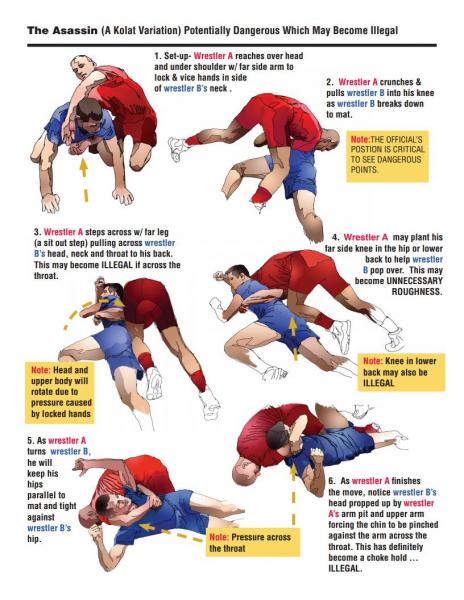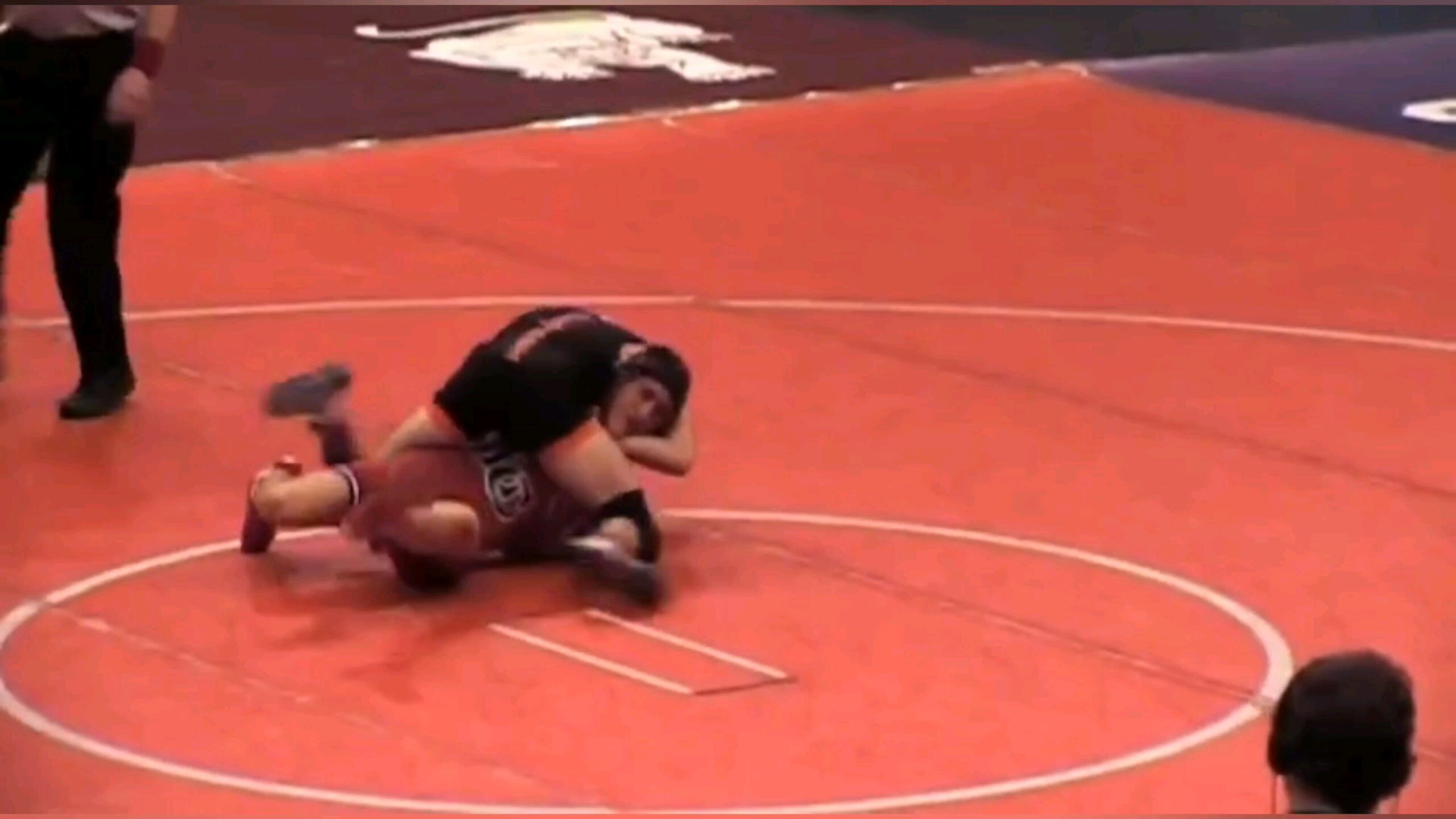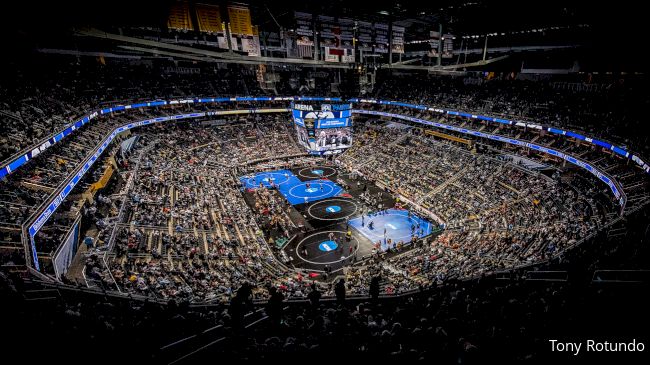Can You Choke in Wrestling? Safety Tips Unveiled
Yes, you can choke in wrestling, but it is highly regulated. Choking techniques, when used, must follow strict rules.
Wrestling, a sport combining physical prowess, technique, and strategy, has captivated audiences worldwide. This grappling sport includes various styles, such as freestyle, Greco-Roman, and folkstyle, each with its own set of rules and techniques. Safety is paramount, leading to strict regulations on potentially dangerous moves, including chokes.
The aim is to pin the opponent or gain points without causing harm. Training emphasizes discipline, strength, agility, and the ethical use of techniques. Understanding the rules and mastering the art of safe, effective wrestling can lead to success on the mat while ensuring the well-being of all competitors.
The Reality Of Choking In Wrestling
The Reality of Choking in Wrestling is both a literal and figurative concern. In this physically demanding sport, chokeholds serve as both a strategy and a risk. Understanding chokeholds and their risks is crucial for both participants and spectators.
Common Chokeholds
Chokeholds are grappling techniques restricting an opponent’s airway. Wrestlers use these holds to overpower opponents. Let’s explore some common chokeholds:
- Rear Naked Choke: Wrestler wraps an arm around the neck from behind.
- Guillotine Choke: Opponent’s head is trapped under the armpit.
- Triangle Choke: Legs are wrapped around the opponent’s neck.
Risks Involved
While chokeholds can lead to victory, they carry significant risks:
| <stro |
|---|
Distinguishing Legal From Illegal Moves
Distinguishing legal from illegal moves in wrestling is crucial for the safety and fairness of the sport. Wrestlers must know the rules to avoid penalties. Coaches, referees, and fans also need this knowledge.
Regulations Across Leagues
Different wrestling leagues have unique rules. These determine which moves are legal. They aim to ensure matches are safe and competitive.
- Folkstyle: Common in US high schools and colleges.
- Freestyle: Used in the Olympics and international competitions.
- Greco-Roman: No holds below the waist allowed.
Each league’s rulebook states what wrestlers can and cannot do. It’s important to read these before competing.
Gray Areas In Rules
Sometimes, wrestling rules are not black and white. Certain moves fall into gray areas. This can make them hard to judge.
| Move | Legal | Illegal |
|---|---|---|
| Headlock | With proper technique | If neck is cranked |
| Throw | With control and care | If opponent lands on head |
Referees must watch closely. They decide if a move is safe and within the rules. Wrestlers need to adapt to each referee’s interpretation.
Firsthand Accounts: The Wrestler’s Perspective
Firsthand Accounts: The Wrestler’s Perspective offers unique insights from those on the mat. Wrestlers face intense physical challenges. One such challenge is the chokehold. Through their stories, we gain an understanding of what it means to survive and compete with honor.
Surviving A Chokehold
Wrestlers train hard to handle chokeholds safely. Quick thinking and calm reactions are crucial. They must recognize when they are in danger. Immediate action can mean the difference between winning and injury.
- Recognize the hold early
- Stay calm to think clearly
- Use trained techniques to escape
Ethics And Sportsmanship
Sportsmanship matters in wrestling. Respect for opponents is key. Wrestlers must balance aggression with fair play. Ethics guide them to compete with integrity. This ensures safety and honor in the sport.
| Aspect | Importance |
|---|---|
| Respect for Opponents | Builds a positive sport environment |
| Aggression Control | Prevents unnecessary harm |
| Integrity | Upholds the sport’s reputation |
Safety Protocols To Prevent Choking
In the dynamic and physically demanding sport of wrestling, safety is a top priority. One key concern is preventing choking incidents during matches. Wrestlers and coaches follow strict safety protocols to reduce risks. These protocols ensure the well-being of all athletes on the mat.
Pre-match Preparations
Proper training and equipment checks are vital before any match. Wrestlers must warm up to prepare their muscles and minds.
- Warm-up exercises increase flexibility and reduce injury risk.
- Hydration is essential to keep the body functioning well.
- Equipment, like mouthguards, must fit correctly.
Coaches ensure athletes understand the rules. They teach techniques to avoid dangerous holds.
In-match Vigilance
Once the match starts, vigilance is key to preventing choking. Referees monitor the match closely.
| Role | Action |
|---|---|
| Referee | Watches for illegal holds and signals immediately. |
| Coach | Alerts referee to any unnoticed choke risks. |
| Athlete | Uses safe techniques and communicates any distress. |
Communication between the wrestler, coach, and referee is crucial. This teamwork keeps the match safe for everyone.
Training Tips To Avoid Choking
Wrestling demands focus, skill, and safety. A common risk is choking. Proper training helps avoid such dangers. Embrace these tips to stay safe and competitive.
Strengthening Exercises
Strong muscles support better wrestling performance. They also prevent choking. Start with exercises that boost neck and core strength.
- Neck bridges build endurance.
- Planks fortify core muscles.
- Deadlifts enhance overall power.
Use these exercises regularly. They will make your body tougher and more resistant during matches.
Technique Refinement
Mastering wrestling techniques is essential. It reduces the risk of chokes. Pay attention to your moves and holds.
- Practice escape techniques often.
- Work with a coach to perfect positioning.
- Drill defensive strategies to avoid vulnerable spots.
Regular drilling enhances muscle memory. This helps you react swiftly and safely in a bout.
Remember, safety comes first. Train smart to keep choking at bay. Your health and wrestling career depend on it.

Credit: www.expressnews.com
The Role Of Referees In Ensuring Safety
The safety of wrestlers is a top priority in the sport. Referees play a critical role in maintaining this safety. They ensure that every match is fair and free from illegal moves.
Spotting Illegal Moves
Referees must stay alert at all times. They watch for moves that can harm wrestlers. Their training helps them spot illegal actions quickly.
- Chokes: Not allowed in most wrestling forms.
- Joint locks: Targeting certain joints may be illegal.
- Slams: Some slams can cause serious injury.
Decision-making Under Pressure
Referees make tough calls in heated moments. They decide in seconds to keep wrestlers safe. Their choices can stop a match if a wrestler is at risk.
| Move | Legal | Action |
|---|---|---|
| Choke Hold | No | Stop Match |
| Arm Lock | Varies | Evaluate |
| Body Slam | Yes | Continue |
Recovering From A Choking Incident
Choking in wrestling is a scary event. Quick thinking and proper care are vital. Wrestlers and coaches must know the right steps to take. Here’s how to handle a choking incident.
Immediate Actions
Stay calm and seek help. Quick action can save a life. Follow these steps:
- Check responsiveness. Tap and shout to get a response.
- Call for medical staff. Do this immediately if the person is unresponsive.
- Begin the Heimlich maneuver. Use this if the person is conscious but cannot breathe.
- Continue care. Do this until help arrives.
Long-term Health Considerations
After a choking event, take these steps:
- Medical evaluation. Get a full check-up even if you feel fine.
- Rest and recovery. Take time off to heal completely.
- Review techniques. Ensure proper wrestling moves to prevent future incidents.
- Education. Learn more about choking hazards and prevention.

Credit: whatculture.com
Advancing Safety In Wrestling
Wrestling combines strength, skill, and strategy. Safety is a top priority. New measures protect athletes from injuries, including choking hazards. Let’s explore innovations promoting safety.
Innovations In Gear
Safe wrestling gear is crucial. Advances in technology bring new protective equipment. This gear reduces injury risks during matches.
- Headgear: Prevents ear injuries and concussions.
- Mouthguards: Shields teeth and reduces choking risks.
- Neck guards: Offers protection against neck strains.
Educational Programs For Wrestlers
Knowledge is power in preventing injuries. Educational programs for wrestlers teach safety techniques. Coaches learn to recognize and manage choking incidents.
- Proper Breathing Techniques: Enhances endurance and prevents panic.
- First Aid Training: Coaches and athletes learn life-saving skills.
- Rules of the Sport: Understanding rules helps avoid dangerous holds.

Credit: www.ghsa.net
Frequently Asked Questions
Can You Choke In Catch Wrestling?
Yes, choking techniques are allowed in catch wrestling. This form of wrestling embraces a wide range of submission holds, including chokes. Competitors can use these techniques to secure victories by making their opponents submit.
Are Chokeholds Illegal In Wwe?
Chokeholds are banned in WWE due to their potential risk of serious injury. This regulation ensures wrestler safety during matches.
Are There Headlocks In Wrestling?
Yes, headlocks are common techniques used in wrestling. They involve gripping the opponent’s head to control their movement. Wrestlers frequently use headlocks for strategic advantage during matches. This move is effective in both amateur and professional wrestling.
Can You Choke Slam In Wrestling?
Yes, you can perform a choke slam in wrestling. It’s a popular move where a wrestler lifts an opponent by the throat and slams them down. This action requires skill and safety measures to execute properly during matches. Always ensure it’s performed in a controlled environment.
Is Choking Allowed In Wrestling?
Choking is strictly prohibited in most wrestling disciplines, as it poses significant risks to the health and safety of competitors.
Conclusion
Wrestling demands intense skill and awareness to avoid dangerous situations. Understanding the rules and mastering techniques can significantly reduce choking risks. Always prioritize safety and proper training to enjoy the sport while minimizing the chance of harm. Stay educated, stay safe, and keep wrestling smart.





